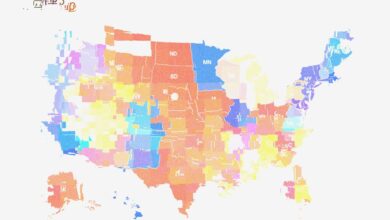

Photo-Illustration: Intelligencer; Photos: Getty Images
There’s very little question that Kamala Harris was the stronger contestant in the September 10 debate in Philadelphia. Snap polls said so, but if there was any doubt it should have been resolved by the intense and incessant claims from Team Trump that the event was “rigged” by its media sponsor and the moderators.
The bigger question, though, is whether the debate will move the race in Harris’s direction in subsequent polls. It’s too early to say definitively, but there is enough initial polling to suggest that it did Harris some significant good at a time when there were fears among her supporters that her high-flying campaign was finally drifting back toward hard ground. The New York Times’ Nate Cohn summarizes the early evidence:
It’s still too soon to judge the fallout from the presidential debate, but the polls already suggest that Kamala Harris might be poised to gain.
The initial surveys of people who watched the debate found that most viewers thought she won, and the candidate deemed the winner in the post-debate surveys usually tends to gain in the polls.
The first few polls taken entirely since Tuesday’s debate show her faring better than polls taken beforehand …
According to our average, she has already gained about one point nationwide, rising from a 1.7-point lead on Wednesday morning to a 2.7-point lead as of Monday morning. That one-point shift has been reasonably consistent across the six national polls that took surveys before and after the debate.
That could be just the beginning of the good news for Harris, as Cohn continues:
In the days ahead, Ms. Harris may gain even more ground. For one, most of the post-debate polls have come from online panels. They tend to shift less than other polls, as they’re often composed of highly engaged voters and weighted more heavily than the typically more volatile phone surveys, which will probably arrive this week.
There’s another reason: Many people don’t watch debates, but they do hear the post-debate coverage — like the continuing discussion of Mr. Trump’s false claim that Haitian immigrants in Springfield, Ohio, have been eating pets. Extended coverage of a debate can help the perceived winner just as much as the debate itself, and yield additional polling gains in the days or even weeks thereafter.
One big question is whether the second attempted assassination of Trump in Florida on September 15 is distracting voters from further contemplation of the former president’s erratic performance on September 10 or might produce a sympathetic reaction in his favor. It will be a while before we have the answer, which will help determine where the race has settled post-debate. And by next week, we should also be getting robust post-debate poll findings from battleground states, where, of course, the election will ultimately be decided.
At this point, to be clear, the balance of power between Harris and Trump in the Electoral College is on a razor’s edge. But to some extent the Sun Belt–Rust Belt divide between Republican-leaning and Democrat-leaning battleground states has reemerged. In the FiveThirtyEight averages, Trump leads in Arizona by 0.8 percent (47.4 to 46.7 percent), in Georgia by the same 0.8 percent (47.8 to 47.0 percent), and in North Carolina by an even smaller 0.4 percent (47.5 to 47.1 percent). Harris is hanging on to a 0.4 percent lead (46.9 to 46.5 percent) in the fourth Sun Belt state, Nevada. And she leads in all the Rust Belt (also known as Blue Wall) battleground states: in Michigan by 1.5 percent (47.6 to 46.1 percent), in Pennsylvania by 0.6 percent (47.4 to 46.8 percent), and in Wisconsin by 2.7 percent (48.6 to 46.0).
If you build an electoral vote map based on these numbers (with everything else staying as it was in 2020), then Harris leads with 276 electoral votes to Trump’s 262. But two notes of caution are in order, beyond the seven weeks of campaigning left in which lots could happen. The candidates remain within a point of each other in the two most likely tipping-point states, according to most estimates, Georgia and Pennsylvania. And as it happens the two states with the greatest polling errors underestimating Trump’s vote in 2016 and 2020 are Pennsylvania and Michigan, where Harris might need a bigger polling lead.
One possible advantage that Harris might retain is a favorability edge that leaves more undecided voters open to supporting her. At present her ratio (per FiveThirtyEight) is now positive at 46.6 percent favorable and 46.5 unfavorable. Trump’s ratio is at 42.9 percent favorable and 52.5 percent unfavorable. It’s not a huge gap, but this is a profoundly big contest that may turn on small things.
Source link




